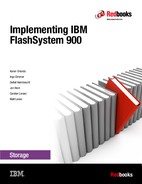Book Description
Today’s global organizations depend on being able to unlock business insights from massive volumes of data. Now, with IBM® FlashSystem 900, powered by IBM FlashCore™ technology, they can make faster decisions based on real-time insights and unleash the power of the most demanding applications, including online transaction processing (OLTP) and analytics databases, virtual desktop infrastructures (VDIs), technical computing applications, and cloud environments.
This IBM Redbooks® publication introduces clients to the IBM FlashSystem® 900. It provides in-depth knowledge of the product architecture, software and hardware, implementation, and hints and tips. Also illustrated are use cases that show real-world solutions for tiering, flash-only, and preferred-read, and also examples of the benefits gained by integrating the FlashSystem storage into business environments.
This book is intended for pre-sales and post-sales technical support professionals and storage administrators, and for anyone who wants to understand how to implement this new and exciting technology.
This book describes the following offerings of the IBM Spectrum™ Storage family:
IBM Spectrum Storage™
IBM Spectrum Control™
IBM Spectrum Virtualize™
IBM Spectrum Scale™
IBM Spectrum Accelerate™
